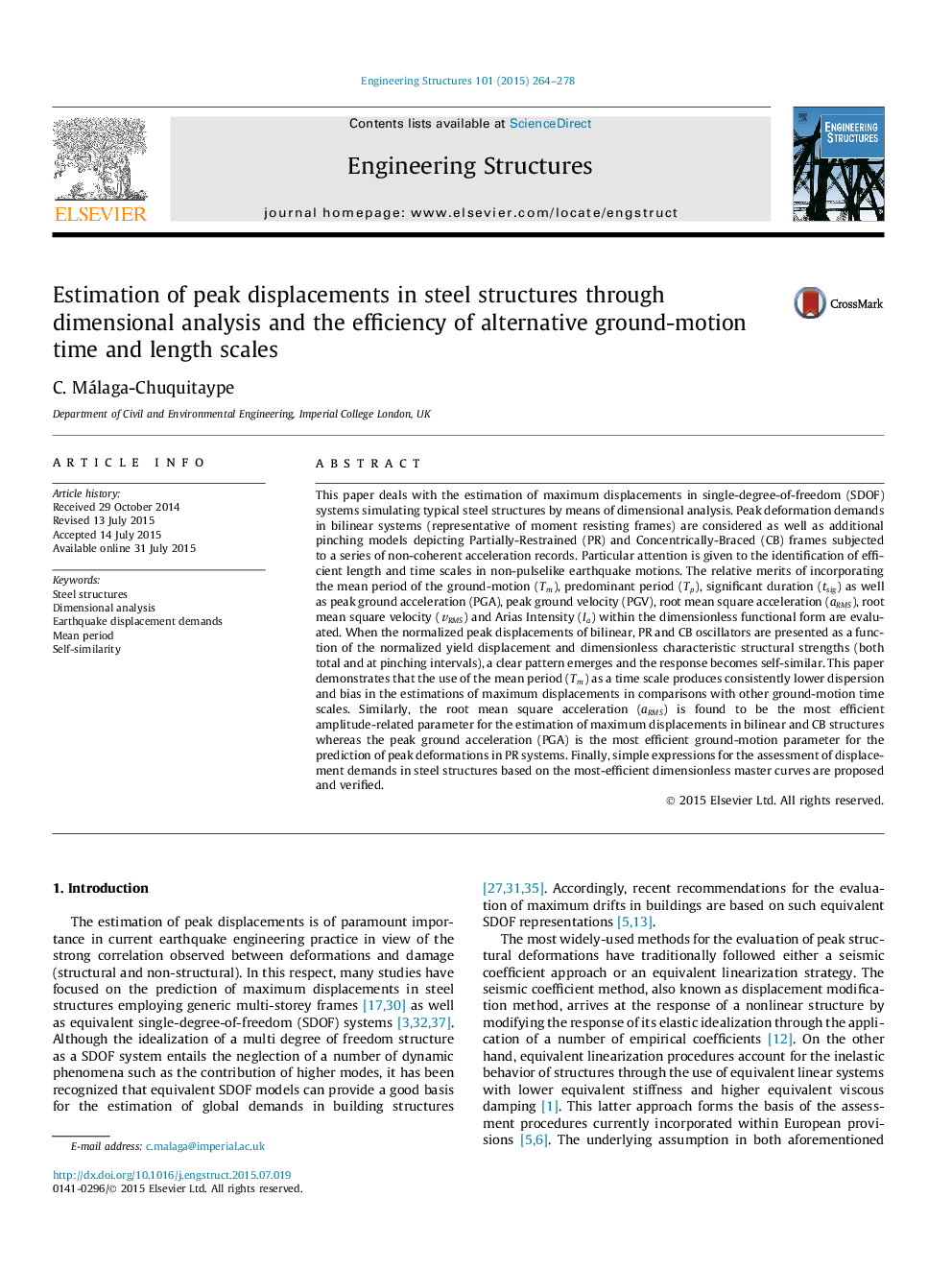| Article ID | Journal | Published Year | Pages | File Type |
|---|---|---|---|---|
| 266042 | Engineering Structures | 2015 | 15 Pages |
•The response of partially-restrained and concentrically-braced frames is studied with dimensional analysis.•A number of time and length scales are evaluated for non-pulselike ground-motions.•The mean period of the ground-motion is more efficient than other alternative time scales.•The root mean square acceleration leads to better estimations in bilinear and CB structures.•Simple expressions for the assessment of peak displacements in steel structures are proposed.
This paper deals with the estimation of maximum displacements in single-degree-of-freedom (SDOF) systems simulating typical steel structures by means of dimensional analysis. Peak deformation demands in bilinear systems (representative of moment resisting frames) are considered as well as additional pinching models depicting Partially-Restrained (PR) and Concentrically-Braced (CB) frames subjected to a series of non-coherent acceleration records. Particular attention is given to the identification of efficient length and time scales in non-pulselike earthquake motions. The relative merits of incorporating the mean period of the ground-motion (TmTm), predominant period (TpTp), significant duration (tsigtsig) as well as peak ground acceleration (PGA), peak ground velocity (PGV), root mean square acceleration (aRMSaRMS), root mean square velocity (vRMSvRMS) and Arias Intensity (IaIa) within the dimensionless functional form are evaluated. When the normalized peak displacements of bilinear, PR and CB oscillators are presented as a function of the normalized yield displacement and dimensionless characteristic structural strengths (both total and at pinching intervals), a clear pattern emerges and the response becomes self-similar. This paper demonstrates that the use of the mean period (TmTm) as a time scale produces consistently lower dispersion and bias in the estimations of maximum displacements in comparisons with other ground-motion time scales. Similarly, the root mean square acceleration (aRMSaRMS) is found to be the most efficient amplitude-related parameter for the estimation of maximum displacements in bilinear and CB structures whereas the peak ground acceleration (PGA) is the most efficient ground-motion parameter for the prediction of peak deformations in PR systems. Finally, simple expressions for the assessment of displacement demands in steel structures based on the most-efficient dimensionless master curves are proposed and verified.
